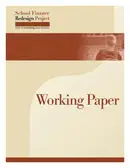With growing pressure for student performance results and increased federal and state mandates, many district leaders and administrators struggle to provide a high-quality education for their students using existing or shrinking resources. These challenges demand hard choices, long-range planning, and a vision for how schools and districts might be organized to improve student performance. Unfortunately, many school leaders do not have adequate tools that allow them to develop a deep understanding of the key drivers of district costs and the fundamental resource trade-offs among them. Without frameworks and tools for analyzing effective ways of using time, people, and money, districts make resource decisions that may appear to promote improved student learning, but, in fact, have little chance of changing the quality of instruction.
To help school leaders build this understanding and make more effective resource decisions, Education Resource Strategies (ERS), a non-profit organization that supports schools and districts in rethinking resources strategically, developed the District ResourcE Allocation Modeler (DREAM). DREAM is based on the premise that school systems can improve student performance through a more transparent, strategic, and research-based use of district resources. By using DREAM, leaders gain a deeper understanding of the connection between resource use and drivers of student performance. This paper describes the research and principles underlying the DREAM tool, provides an overview of the tool and how it is used, and walks through a detailed example of how a district decisionmaker might use the tool to understand the resource trade-offs involved with various policy changes.





